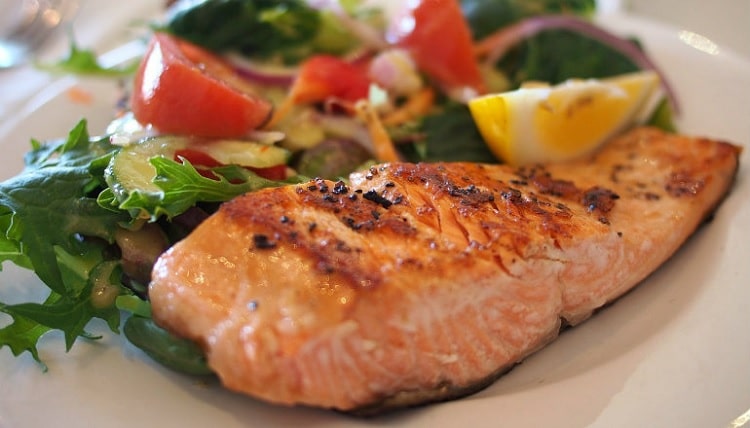Transform Your Body in 20 Days: The Ultimate Guide to Safe and Effective Weight Loss
Are you sick and tired of feeling lethargic, embarrassed, or just dissatisfied with your weight right now? If so, you are not by yourself. In fact, losing weight is one of the most popular self-imposed objectives, and for a good reason.
Your physical health can suffer significantly if you are overweight, and you run a higher risk of developing chronic disorders like diabetes, heart disease, and some types of cancer.

However, the effects go beyond only monetary ones; they may also have an influence on your mental health and general well-being, making it more challenging to live a confident and contented life.
This article fills that need. We’re here to help you take charge of your health and lose weight in only 20 days. These suggestions and tactics can assist you in reaching your goals, whether you’re trying to lose a few pounds quickly or begin a more sustained weight loss program. Let’s thus go on this fascinating adventure to a happier, healthier self!
Setting Realistic Goals
You won’t be successful in losing weight unless you set reasonable goals. It’s crucial to keep in mind that lasting weight reduction is a process that takes time and does not occur instantly. Setting good goals can help you stay motivated and on course.
If you don’t achieve them, setting unreasonable objectives can be disappointing and cause emotions of failure. On the other side, reaching realistic goals may help you feel more accomplished, improve your self-esteem, and maintain your motivation to keep losing weight.
So, how can you make sure your goals are realistic? Here are some tips:
- Be honest with yourself: To begin, be upfront with yourself about what you can actually do in 20 days. If you don’t achieve your overly ambitious goals, it might not be very reassuring. Start by setting modest, manageable goals. For instance, you may develop a plan to walk 500 more steps each day or lose 1-2 pounds per week.
- Focus on what’s within your control: It’s crucial to concentrate on objectives that you can influence. While the amount of weight you lose in a week is out of your control, you can control the steps you take to get there. To assist your weight loss journey, instead of establishing a goal to lose a certain amount of weight, build objectives around the precise actions you’ll do. This might entail increasing your vegetable intake, increasing your water intake, or exercising for 30 minutes each day.
- Make your goals specific, measurable, and time-bound: Making your objectives concrete, quantifiable, and time-bound will enable you to monitor your development and maintain motivation during your 20-day trip. Instead of stating, “I want to eat healthier,” for instance, choose a more precise goal, such as “I will eat three servings of veggies per day for the next 20 days.” You’ll be able to track your progress and recognize your victories along the road if you make your objectives quantifiable.
- Be flexible: Be gentle to yourself and flexible with your ambitions; never forget that. In order to lose weight in a sustainable way, you must travel, and along the way, you will encounter obstacles and failures. Don’t berate yourself if you realize that you are having trouble achieving your goals; instead, change your plans to make them more feasible and practical.
If you set objectives that are both reasonable and achievable, your chances of success will rise, and you’ll be comfortable on the path to achieving your weight loss goals in only 20 days. So, take your time to think about your goals and develop a plan that works for you!
Nutrition
To achieve weight loss in 20 days, it’s essential to focus on a healthy and balanced diet. This includes incorporating plenty of whole foods like veggies, fruits, whole grains, and lean protein sources into your meals.
Additionally, it’s important to limit processed and high-calorie foods and avoid sugary drinks and snacks. Tracking your calorie intake and eating in a calorie deficit can also be helpful for weight loss.
Remember to stay hydrated, and consider seeking the advice of a registered dietitian for personalized nutrition guidance.
Here are some tips for creating a nutritious meal plan for the 20 days:
- Start with breakfast: Eating a nutritious breakfast can help jumpstart your metabolism and keep you feeling full throughout the morning. Try to balance macronutrients in your breakfast, such as protein, healthy fats, and complex carbohydrates. For example, you could have scrambled eggs with avocado and whole-grain toast.
- Plan your meals ahead of time: Making better decisions and avoiding on-the-go unhealthy snacking or fast food may both be facilitated by meal planning. Spend some time each week planning your meals and creating a shopping list for the products you’ll need.
- Include a variety of vegetables: Vegetables are a great source of fiber, vitamins, and minerals that may keep you feeling filled for longer and benefit your general health. Incorporate a range of vibrant veggies into your meals, such as bell peppers, broccoli, leafy greens, and carrots.
- Choose lean proteins: A nutritious and balanced diet must include lean proteins like chicken, fish, and tofu. They can stimulate muscle growth and regeneration while also making you feel fuller for longer. Look for lean proteins that are low in saturated fat when selecting proteins.
- Be mindful of your portion sizes: If you consume too much of anything, including nutritious meals, you might gain weight. Use measuring spoons and cups to make sure you are eating the right quantities by being aware of your portion proportions.
You may reach your weight reduction objectives in just 20 days by concentrating on complete, nutrient-dense meals, sensible portion sizes, and an appropriate balance of macronutrients. Be kind to yourself, and remember to recognize your accomplishments along the road.
Exercise
Regular exercise is a crucial part of achieving weight loss in 20 days. Aim to include at least 30 minutes of moderate-intensity exercise into your daily routine, such as brisk walking, jogging, cycling, or swimming.
Incorporating strength training exercises like weight lifting, push-ups, and squats can help you build muscle and boost your metabolism, which aids in weight loss.
To avoid becoming bored and to train different muscle areas, try to vary your routines. In order to make your workout more challenging and help you burn more calories faster, think about including circuit training or high-intensity interval training (HIIT).
As your fitness level rises, be sure to pay attention to your physical condition and gradually boost the length and intensity of your workouts.
Here are some suggestions for incorporating exercise into your daily routine:
- Start small: If you’re new to exercise, start with small, manageable goals and work your way up. For example, you could start by taking a 10-minute walk each day and gradually increase the time and intensity of your workouts.
- Find an activity you enjoy: Exercise doesn’t have to be a chore – find an activity that you want and make it a part of your daily routine. Whether it’s dancing, swimming, cycling, or yoga, find an activity that you look forward to and that fits your schedule and lifestyle.
- Mix it up: In terms of exercise, variety is crucial. You may burn calories, gain muscle, and enhance your general health by combining aerobic and weight exercise. Try incorporating a variety of activities into your program, such as yoga, weightlifting, and jogging.
- Make it social: It may be a terrific way to keep motivated and make fitness more enjoyable to work out with friends or family. Participate in a group exercise class, join a jogging group, or just go for a stroll with a friend.
- Make it a habit: When it comes to exercise, consistency is vital. Whether it’s first thing in the morning, over your lunch break, or after work, try to make exercise a daily ritual. Make your activities a non-negotiable part of your routine by scheduling them on your calendar.
Different forms of exercise have added advantages. Running or cycling are cardiovascular exercises that can help you lose weight and amplify your heart. You may increase your metabolism and develop lean muscle mass using strength training techniques like weightlifting or bodyweight workouts. Stretching and other flexibility activities, like yoga, can increase your range of motion and lower your risk of injury.
You may reach your weight loss objectives in only 20 days by combining a variety of workouts into your regimen and making exercise a regular habit. Keep in mind to pay attention to your body, take breaks as needed, and relish the experience!
Lifestyle Changes
Making lifestyle changes is essential for achieving long-term weight loss success within 20 days. While focusing on nutrition and exercise is important, sustainable weight loss also involves making changes to your daily habits and overall lifestyle.
Here are some tips for making sustainable changes to support your weight loss journey:
- Reduce stress: Overeating, impulsive eating, and other harmful behaviors can result from stress. You may avoid these problems and maintain your weight reduction objectives by learning stress management strategies, such as yoga, meditation, or other forms of relaxation.
- Get enough sleep: A disturbed metabolism, an increase in hunger, and difficulty losing weight are all effects of sleep deprivation. To help your attempts to lose weight, try to obtain 7-9 hours of sleep per night.
- Avoid unhealthy habits: Your attempts to lose weight might be thwarted by unhealthy habits like smoking, binge drinking, and other vices. Consult a healthcare provider or a support group if you’re having trouble quitting.
- Practice mindful eating: In order to eat mindfully, you must focus on your meal, enjoy each mouthful, and pay attention to your body’s signals of hunger and fullness. You may avoid overeating and choose healthier foods by engaging in mindful eating.
- Make it a routine to get active each day: Going for a quick stroll after meals or choosing the stairs rather than the elevator are just two examples of minor changes that may build up over time and help you reach your weight loss objectives.
Remember that sustainable weight loss is a marathon, not a sprint. Making small, incremental changes to your daily habits can lead to significant results over time. Focus on making changes that feel manageable and enjoyable rather than overwhelming or restrictive.
By making sustainable lifestyle changes, you’ll not only achieve your weight loss goals but also improve your overall health and well-being.
Monitoring Progress
In order to stay motivated during your 20-day weight-loss journey, it’s crucial to track your success. Measure your weight and waistline regularly, keep track of your calorie consumption using a food diary or an app, and take progress pictures to see how your body is changing.
Use your progress monitoring to alter your behaviors as necessary and to rejoice in minor accomplishments along the road.
Here are some tips for tracking your progress during the 20 days:
- Keep a food journal: Note the portions you ate and drank as well as everything you consumed. By doing this, you might find out where you could be consuming too many calories or needing more nutrients.
- Weigh yourself regularly: Weighing yourself once a week can give you a good idea of your progress. However, remember that weight can fluctuate from day to day, so don’t get discouraged if you see small fluctuations.
- Take body measurements: Measuring your waist, hips, arms, and thighs can give you a more accurate picture of your progress than just relying on the scale. You may be losing inches even if the scale isn’t moving much.
- Keep a workout log: Write down the type of exercise you did, the duration, and the intensity level. This can help you see your progress and identify areas where you may need to increase your activity level.
- Celebrate your successes: Celebrate each tiny accomplishment along the road, whether a pound lost or a week of consistent activity. This can keep you inspired and committed to achieving your objectives.
Keep in mind that being in better condition and reducing weight are processes that require time. If you don’t see results right away, don’t give up.
Keep tabs on your development and modify as necessary to stay on target. You could succeed in losing weight and enhance your overall health and well-being if you are dedicated and persistent.
Dealing With Setbacks
Weight loss journeys can be challenging, and setbacks are common. Some common setbacks include a lack of motivation, difficulty sticking to a diet or exercise routine, and plateaus where weight loss seems to stall.
Here are some strategies for overcoming setbacks and staying on track:
- Reframe your mindset: Consider setbacks as chances for learning and growth rather than failures. Use your setbacks as fuel to keep going by keeping in mind that they are a regular part of any weight loss program.
- Reassess your goals: If you’re feeling stuck, it may be helpful to reassess your goals and adjust them if necessary. Are they realistic and achievable within 20 days? Do they align with your overall health and wellness goals?
- Seek support: Having a support system can make a big difference in staying on track with weight loss. Consider enlisting the help of a friend, family member, or a professional like a registered dietitian or personal trainer.
- Get going again: Don’t punish yourself if you falter in your diet or exercise regimen. Instead, concentrate on returning to the right path as quickly as possible. Don’t allow one failure to stop you from moving on.
- Mix it up: Sometimes, a change of routine can help overcome a plateau or lack of motivation. Consider trying a new type of exercise, cooking a new healthy recipe, or finding a new way to reduce stress.
Keep in mind that setbacks are an expected part of any weight loss plan. They shouldn’t discourage you or hinder your advancement. Instead, please take advantage of them as a chance to advance your knowledge and commitment to your objectives.
You may successfully lose weight and enhance your general health and well-being if you give it enough time, patience, and determination.
Conclusion
In conclusion, it is feasible to lose weight in 20 days with the appropriate strategy. Setting reasonable objectives, eating a healthy, balanced diet, getting regular exercise, changing your lifestyle in a way that will last, keeping track of your progress, and overcoming obstacles are all crucial aspects in successfully losing weight.
Remember that losing weight is a journey and that setbacks are common along the way. If you encounter obstacles along the route, don’t give up. Instead, be dedicated to your objectives and take advantage of failures to improve.
You may accomplish your weight loss objectives and enhance your general health and well-being by using the advice in this article. Maintain your drive, your outlook, and your faith in the process. You can get the desired outcomes with commitment, endurance, and patience.
Faqs
The weight you can lose in 20 days depends on your starting weight, age, gender, and metabolic rate. However, a safe and healthy weight loss goal for 20 days is between 2 to 4 kilograms (4 to 8 pounds).
Aiming for such extreme weight loss quickly is not recommended as it can harm your health. Losing 8 kgs in 20 days is considered an unrealistic and unsafe goal. Focusing on sustainable weight loss and making gradual lifestyle changes for long-term success is essential.
The best way to lose weight in 20 days is by following a balanced diet plan, incorporating regular exercise into your routine, making healthy lifestyle changes, and staying motivated by tracking your progress.
The 20-day diet challenge program encourages individuals to follow a healthy and balanced diet plan for 20 days to lose weight and improve overall health. It typically includes meal planning, tracking progress, and incorporating exercise into a daily routine.
Losing 10 kg in 20 days is an extreme and unsafe weight loss goal. Focusing on sustainable weight loss and making gradual lifestyle changes for long-term success is essential. Consult a healthcare professional for personalized recommendations on safe and healthy weight loss strategies.
Fast weight loss in 20 days can harm your health if achieved through extreme measures such as crash diets or excessive exercise. Focusing on safe and sustainable weight loss is essential to making healthy lifestyle changes and incorporating regular exercise into your routine.
Extreme weight loss methods such as crash diets, fasting, or excessive exercise can harm your health and lead to rebound weight gain. Focusing on safe and sustainable weight loss strategies such as a balanced diet plan and regular exercise is essential.







